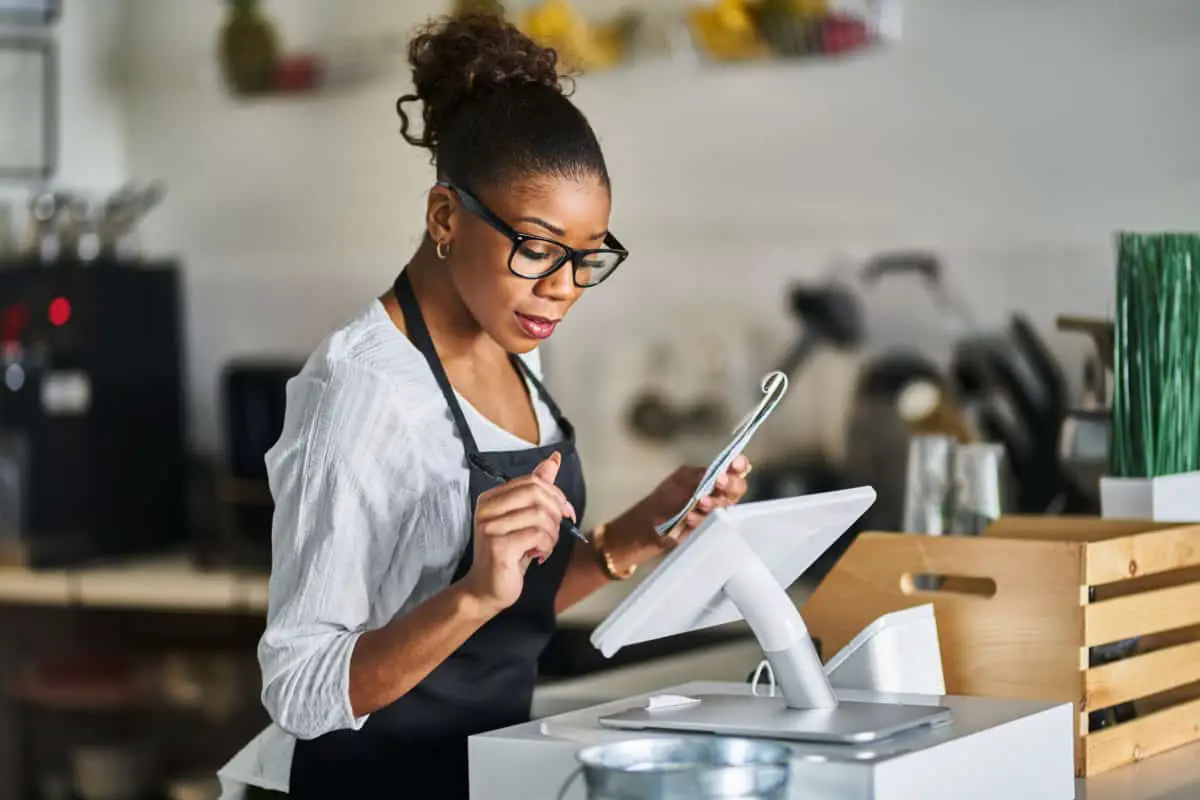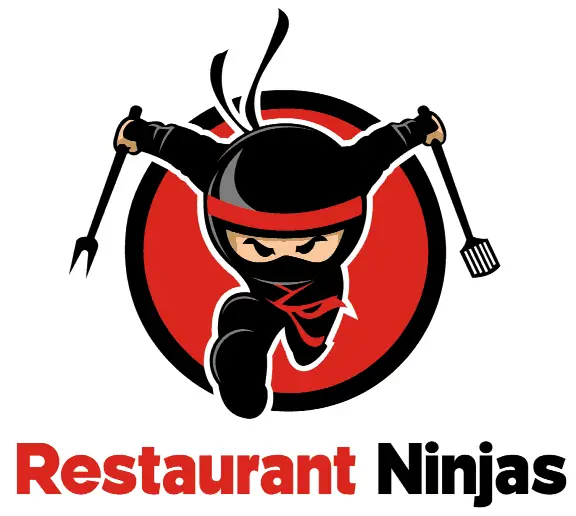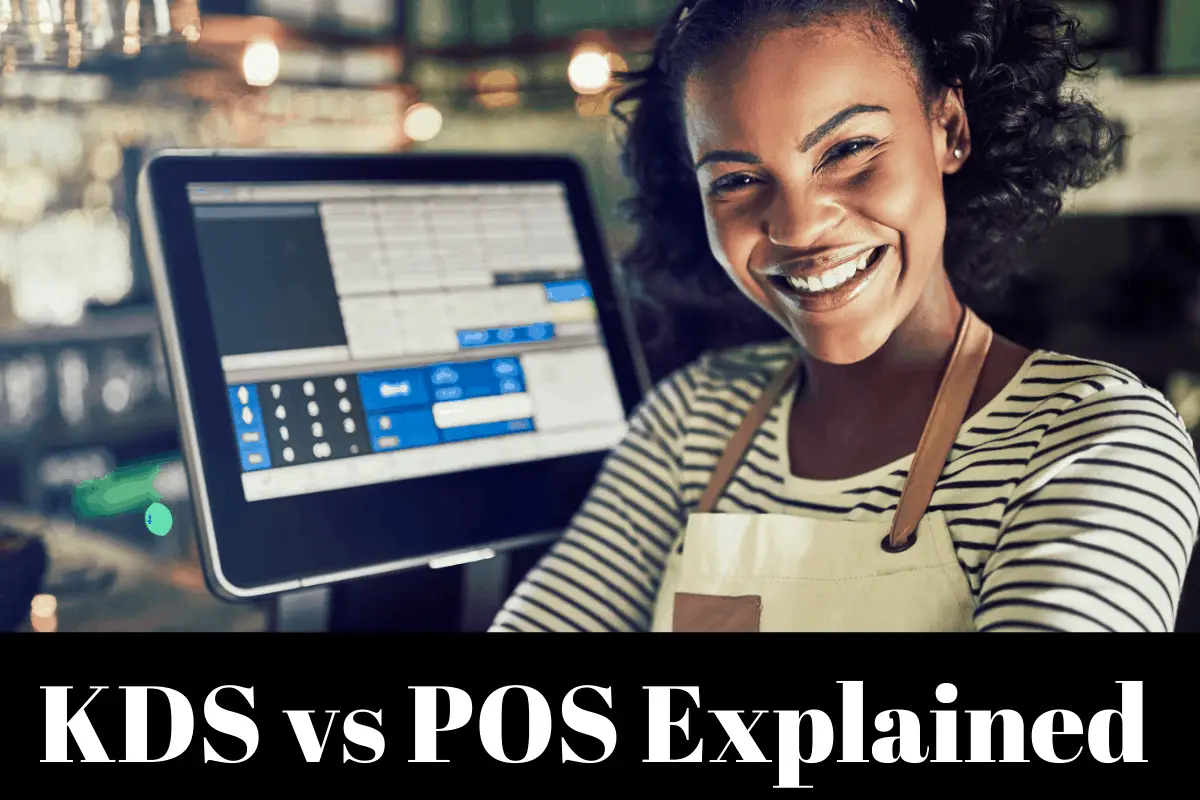You are getting ready to open a new restaurant and are looking for the best way to organize your workflow. People have been telling you about point of sale (POS) systems, while others have been praising the value of a good kitchen display system (KDS). But what is the difference? And which one should you be installing in your restaurant?
What is the difference between a KDS and a POS? They are very different systems used for very different purposes. A POS and a KDS do not have an either/or relationship, but rather work together to make your restaurant run more efficiently.
| SYSTEM | WHERE ITS USED | WHAT IT DOES |
| POS | Front of the house | Allows servers to input orders from the customersInitializes the order transaction |
| KDS | Back of the house | Used in the back of house to help make the kitchen run more efficiently by digitally displaying the ordersReplaces the need to print out the orders on paper |
Each system is vital to the running of a modern restaurant, especially one that decides to take part in the almost unavoidable world of online orders. The proper POS and KDS will have your kitchen moving as effectively as possible without sacrificing customer service.
POS

A Point of Sale system is a front of house system for taking orders. Think of it as the replacement for the cash register but offering so much more than just taking money. A POS runs off of a touch screen terminal that can be placed in a set location or a tablet that can be carried around a dining area. People use POS in their restaurants because they give them…
- Versatility: Do you have a counter? Or do you have a wait staff that goes to tables? Either way, a POS works for you. A POS gives you the ability to run your restaurant and service your customers in any way you want. With a POS, you can take orders, send them to the back, and take payments from anywhere in the restaurant.
- More efficient communication: A POS will send the order taken in the front of the house to the back. This saves time as the server does not need to deliver the order themselves.
- Ability to accept different payment types: The modern world seems to have an endless amount of payment options. A POS allows you to accept as many of them as you want. Manual methods of accepting payment limit you to cash, but a POS opens you up to credit cards, debit cards, EVM chip cards, contactless payments, and digital wallets, like Apple or Android pay.
- Inventory management: Unlike a cash register that can only ring up meals, a POS can keep inventory based on what you sell. You can also use it to set up reorder triggers. The POS saves you time by not only keeping track of transactions but of real-time inventory as well.
- Easier accounting: A POS can import data to your accounting program, saving you hours of looking over receipts and keeping books.
KDS
A Kitchen Display System is used in the back of your restaurant in order to help the workers get the food out to the customer more efficiently. The KDS takes the place of printers and paper that are traditionally used to communicate orders from the front of house.
A typical KDS places a monitor at each one of your stations in the back. Orders go from the front of house to only the stations that would work on the ordered dish. This streamlines the ordering process and allows you to know where a dish is at any given time. People use KDS in their restaurants because it helps them…
- Track Fulfillment Times: A KDS will track the time it takes to fill each ticket, in some cases, how long each station takes. There are endless reports based on things like day of week and time of day to get a great idea of how your kitchen is performing.
- Simplify Cooking: With paper receipts, you only get one order at a time. With a KDS, you can see everything at once, which shows chefs what needs to be on the grill or in the fryer instead of them having to do all the math themselves.
- Increase Kitchen Efficiency: KDS will send each part of a new ticket to the station that needs to address that part. So, an appetizer order goes to the appetizer station, a grill order goes to the grill station, instead of one printed paper needing to be communicated to everyone. With most KDS, you can color-code tickets to change color when not fulfilled in certain times, keeping staff accountable.
- Improve Order Accuracy: Paper tickets can be hard to read and often cause confusion with what goes where or who ordered what. With KDS, this confusion is removed by clarifying each order and giving each station the information it needs to complete the order accurately.
- Streamline Workflow: KDS will help the back of the house communicate better with the front of house by letting the servers know when orders are ready for pick up.
- Cut Costs: Although the system may cost more upfront, the amount of money you will save just on paper will quickly be worth it.
- Improve Online Ordering: KDS will allow you to blend online orders with in-house orders. Without this integration, a staff member has to reenter online orders, wasting time and energy. It allows you to give your online customers a more accurate idea of how long their order will take because the system is seeing the whole workload.
All of this not only makes your kitchen more efficient and streamlined but also gives you a higher caliber of customer service. With your kitchen running more efficiently and communication being as clear as possible, you are able to provide a better product and spend more time on customer needs.
POS and KDS Together
Because of their nature, it is very common to have both a POS and a KDS working together. You should be careful when purchasing, though, because not all POS and KDS are compatible. If you already have a POS in place, see what KDS works with that POS and choose from there.
If you are starting fresh, look for a KDS that will integrate with as many POS as possible because not all POS will fill your needs. Also, look for a KDS that has features that your POS lacks, such as the ability to run a certain report.
Restaurants will integrate a POS and KDS to hopefully make their restaurant run as efficiently as possible and create a top-notch customer experience. Owners are looking too…
- Reduce ticket times: The systems work together to get orders to the kitchen in a quick and effective manner, have the food prepared as fast as possible, and get the food to the customer’s table without delay.
- Save on food cost: With more accurate orders and meals delivered on time, there should be fewer returned meals and mistakes in the kitchen. This means less wasted food.
- Save on paper cost: There is no need for printers and paper tickets, so there is little to no money spent on paper.
- Better customer experience: With the kitchen and front of house working smoother, the hope is that you will be able to deliver a better customer experience. Integrated systems should allow your waitstaff to spend more time on the customer’s needs and allows the kitchen staff to focus on delivering the best meal.

